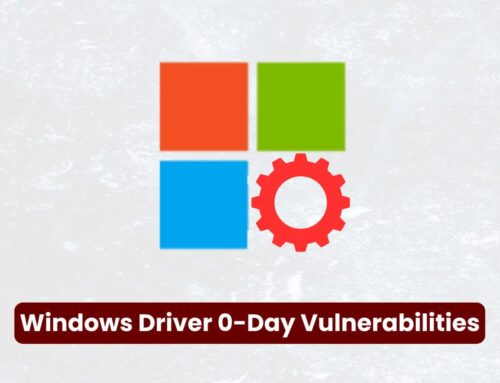
Google Project Zero to Publicly Announce Vulnerabilities Within a Week of Reporting Them
In a move set to redefine vulnerability disclosure, Google Project Zero, the esteemed cybersecurity research team, has announced a significant shift in its policy. This groundbreaking initiative will see them publicly announcing security vulnerabilities within a mere week of reporting them to vendors. This trial policy marks a dramatic departure from the traditional, often protracted, timelines where vulnerability details remained confidential until patches were developed and widely deployed.
This bold new approach has profound implications for both software vendors and the broader cybersecurity landscape. It aims to accelerate patching efforts, increase transparency, and ultimately enhance the security posture of the digital ecosystem. Understanding the nuances of this policy, its potential benefits, and the challenges it presents is crucial for IT professionals, security analysts, and developers alike.
Understanding Google Project Zero’s New Disclosure Policy
The core of Google Project Zero’s new policy revolves around a strict one-week disclosure window. Traditionally, Project Zero, like many responsible vulnerability researchers, operated on a 90-day disclosure deadline, providing vendors ample time to develop, test, and distribute fixes before public disclosure. This new trial policy drastically shortens that window, forcing a rapid response from affected parties.
The rationale behind this accelerated timeline is clear: to pressure vendors into prioritizing and expediting the patching of critical vulnerabilities. By immediately making vulnerabilities public, Project Zero aims to create urgency, preventing delays that could leave users exposed to known security flaws for extended periods. This transparency also empowers users and organizations to assess their own risks and take mitigating actions, even if a vendor patch isn’t immediately available.
It’s important to note that this is a trial policy. Project Zero will likely be evaluating its effectiveness and impact on vendor responsiveness and overall security outcomes during this period. The details of specific vulnerabilities, once reported, will be made public on the Project Zero bug tracker, providing full transparency to the community.
Implications for Software Vendors
For software vendors, this policy change presents both a challenge and an opportunity. The primary challenge lies in the immense pressure to respond and patch vulnerabilities within an extremely tight timeframe. This will necessitate a significant acceleration of security development lifecycle (SDL) processes, improved incident response capabilities, and potentially a re-evaluation of resource allocation for security teams.
- Accelerated Patching Cycles: Vendors must streamline their patching processes, from vulnerability assessment to patch delivery, to meet the one-week deadline.
- Increased Transparency & Scrutiny: Public disclosure within a week means a higher level of scrutiny from the broader security community and end-users. This can impact reputation if patches are not delivered promptly.
- Resource Allocation: Security teams within organizations will likely require increased resources and dedicated focus to handle the rapid turnaround demanded by this policy.
- Proactive Security Measures: The best defense becomes a good offense. Vendors are incentivized to invest more in proactive security measures, secure coding practices, and robust internal vulnerability assessment programs to minimize critical findings.
However, this also presents an opportunity for vendors to demonstrate their commitment to security. Swift and effective responses to discovered vulnerabilities can enhance trust and brand reputation, differentiating them from competitors who may be slower to react.
Benefits for the Cybersecurity Landscape
The broader cybersecurity community stands to benefit significantly from Google Project Zero’s updated approach:
- Faster Remediation for End-Users: The most direct benefit is that users and organizations will receive patched software much faster, reducing their exposure windows to critical exploits.
- Increased Awareness: Public disclosure brings vulnerabilities into the light, fostering greater awareness among users about potential risks associated with unpatched software.
- Deterrent for Attackers: While attackers might gain access to vulnerability details sooner, the reduced window for exploitation before a public patch is available could deter some from developing exploits, as their shelf life before detection and patching shrinks considerably.
- Enhanced Collaboration: This policy might encourage more collaborative efforts between security researchers and vendors, as both parties are incentivized to resolve issues quickly.
- Improved Industry Standards: Over time, this could elevate the general standard of security across the software industry, as vendors are pushed to prioritize security more intensely.
Remediation Actions for Organizations and Individuals
For organizations and individuals using software, proactive measures are more critical than ever. While this policy aims to accelerate vendor patching, the responsibility for applying those patches still rests with the end-user.
- Implement Robust Patch Management: Establish and adhere to a rigorous patch management program. Prioritize critical security updates immediately upon release.
- Stay Informed: Regularly monitor official vendor security advisories and reputable cybersecurity news sources for information on newly disclosed vulnerabilities and available patches.
- Utilize Vulnerability Scanners: Regularly scan your systems and networks for known vulnerabilities. Tools like Nessus, OpenVAS, or Qualys can help identify missing patches and misconfigurations.
- Educate Employees: Foster a security-aware culture. Employees should understand the importance of timely updates and reporting suspicious activity.
- Layered Security Approach: Beyond patching, implement a multi-layered security strategy including firewalls, intrusion detection/prevention systems (IDS/IPS), endpoint detection and response (EDR) solutions, and strong access controls.
- Backup Data Regularly: In the event of a successful attack, having recent, secure backups is crucial for recovery.
Relevant Tools for Vulnerability Management
| Tool Name | Purpose | Link |
|---|---|---|
| Nessus (Tenable) | Comprehensive vulnerability scanning and management. | https://www.tenable.com/products/nessus |
| OpenVAS (Greenbone) | Open-source vulnerability scanner for network and system assessment. | https://www.greenbone.net/en/community-edition/ |
| OWASP ZAP | Web application security scanner (dynamic analysis). | https://www.zaproxy.org/ |
| Qualys VMDR | Cloud-based vulnerability management, detection, and response. | https://www.qualys.com/security/vulnerability-management-detection-response/ |
Looking Ahead: The Future of Disclosure
Google Project Zero’s new one-week disclosure policy is a bold experiment with the potential to significantly impact the speed and efficiency of vulnerability remediation. While it will undoubtedly place considerable strain on vendors, the ultimate goal is to enhance user security by reducing the window of exposure to critical flaws.
The success of this trial will be closely watched by the entire cybersecurity community. It could set a new precedent for responsible disclosure, pushing the industry towards faster security responses and a more proactive stance against emerging threats. For all stakeholders, the key takeaway is clear: security vigilance and rapid response are no longer optional but essential in an increasingly transparent and fast-paced threat landscape.





